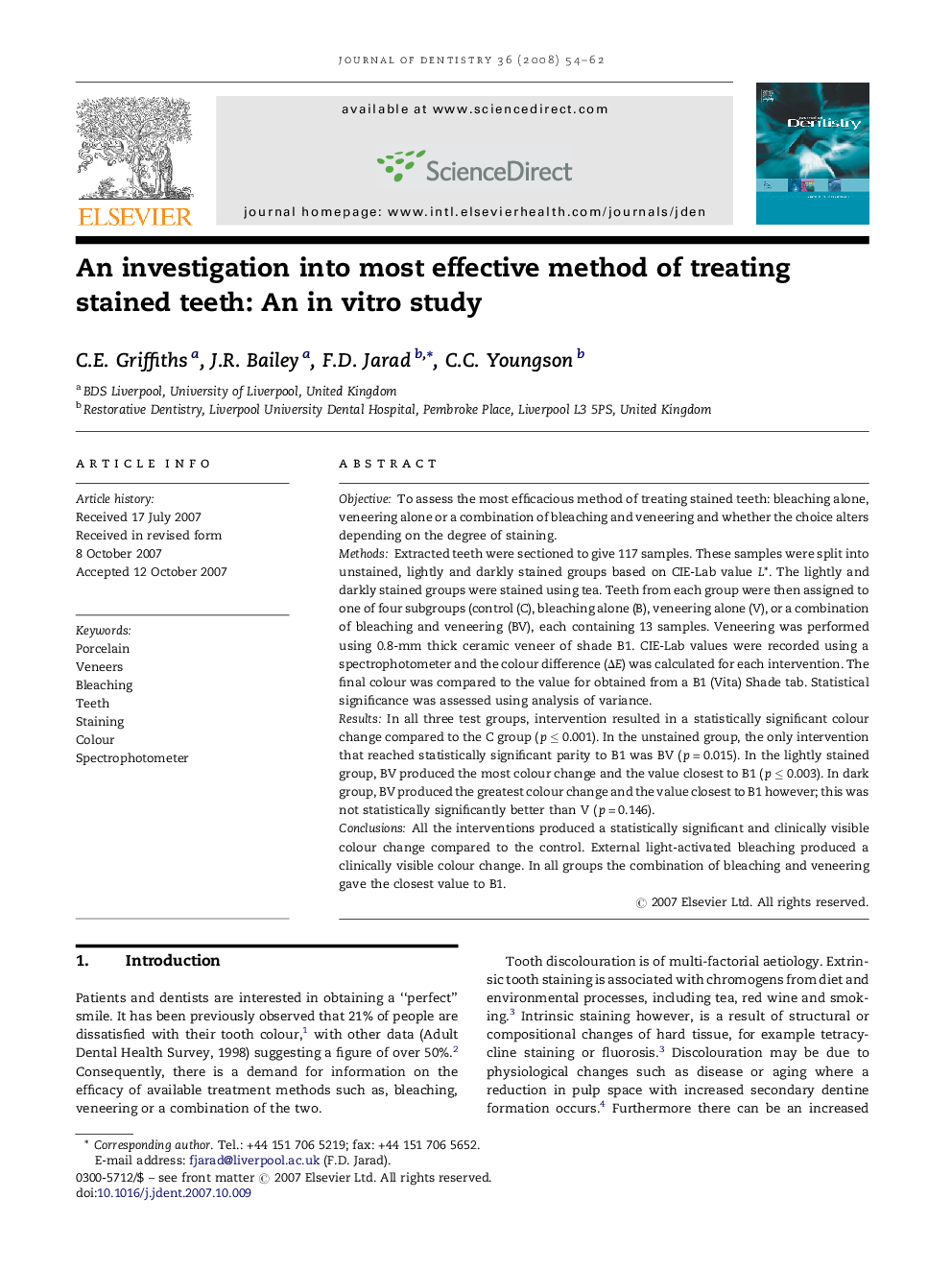| Article ID | Journal | Published Year | Pages | File Type |
|---|---|---|---|---|
| 3145978 | Journal of Dentistry | 2008 | 9 Pages |
ObjectiveTo assess the most efficacious method of treating stained teeth: bleaching alone, veneering alone or a combination of bleaching and veneering and whether the choice alters depending on the degree of staining.MethodsExtracted teeth were sectioned to give 117 samples. These samples were split into unstained, lightly and darkly stained groups based on CIE-Lab value L*. The lightly and darkly stained groups were stained using tea. Teeth from each group were then assigned to one of four subgroups (control (C), bleaching alone (B), veneering alone (V), or a combination of bleaching and veneering (BV), each containing 13 samples. Veneering was performed using 0.8-mm thick ceramic veneer of shade B1. CIE-Lab values were recorded using a spectrophotometer and the colour difference (ΔE) was calculated for each intervention. The final colour was compared to the value for obtained from a B1 (Vita) Shade tab. Statistical significance was assessed using analysis of variance.ResultsIn all three test groups, intervention resulted in a statistically significant colour change compared to the C group (p ≤ 0.001). In the unstained group, the only intervention that reached statistically significant parity to B1 was BV (p = 0.015). In the lightly stained group, BV produced the most colour change and the value closest to B1 (p ≤ 0.003). In dark group, BV produced the greatest colour change and the value closest to B1 however; this was not statistically significantly better than V (p = 0.146).ConclusionsAll the interventions produced a statistically significant and clinically visible colour change compared to the control. External light-activated bleaching produced a clinically visible colour change. In all groups the combination of bleaching and veneering gave the closest value to B1.
